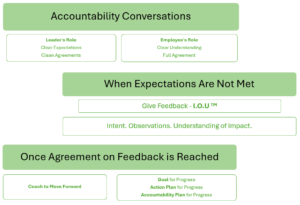 Leo Tolstoy once said, “Everyone thinks of changing the world, but no one thinks of changing oneself.”
Leo Tolstoy once said, “Everyone thinks of changing the world, but no one thinks of changing oneself.”
Leaders tasked with running organizations and driving initiatives are expected to deliver results. To succeed, they often focus on external variables—team performance, operational efficiencies, or budget management—without considering how they might need to evolve personally.
If leadership is about achieving results through effective relationships, a leader’s impact becomes crucial. Understanding what to change in oneself to strengthen relationships and enhance outcomes can provide a powerful competitive advantage. That’s why I often encourage leaders to reflect on this pivotal question: What impact do I have on others?
Self-Awareness: A Leadership Superpower
For leaders to truly understand their impact, they must cultivate a high level of self-awareness. Yet research reveals a striking disconnect: while 95% of people believe they are highly self-aware, only 10-15% actually are.
Taking inventory of one’s strengths, gathering feedback, and assessing how leadership influences the team can set the foundation for long-term success. Let’s explore three key areas where leadership has a direct effect: emotional experience, working process, and decision-making abilities.
- Emotional Experience
In The Heart of Business, Hubert Joly recounts his journey leading Best Buy through a major turnaround. On the eve of Black Friday, a critical sales day, the company’s online purchasing system crashed. Walking into the crisis meeting, Joly paused to remind himself that, as the leader, he was responsible for setting the emotional temperature.
Managing his own frustration and anxiety was essential. If he entered the room too hot or too cold, it would hinder his team’s ability to stay resourceful and persistent as they worked toward a solution. With a calm, cool, and collected presence, Joly was able to lead the team through the crisis.
Leaders, like thermostats, regulate the emotional temperature of their teams. As Daniel Goleman, renowned for his research on emotional intelligence, writes in Primal Leadership,
“The leader’s mood is quite literally contagious, spreading quickly and inexorably throughout the business.”
What emotional temperature are you setting for your team?
- Working Process
A simple yet powerful exercise for leaders to better understand their impact involves asking their teams two questions:
- What do I do that helps you do your work?
- What do I do that interferes with your ability to work effectively?
A senior executive at a manufacturing company used this approach and uncovered an unexpected insight. Her penchant for idea generation, which she saw as her strength, was overwhelming her team.
She frequently tossed out ideas in meetings, but her team interpreted them as mandates, pulling them in conflicting directions and causing constant fire drills. After receiving feedback, she began framing her thoughts explicitly as either “ideas” or “requests.” She also committed to clarifying priorities at the end of each meeting to help her team stay aligned.
While she understood that idea generation was her superpower, she hadn’t realized its unintended effects.
What might you learn by asking your employees what you do that helps or hinders their work?
- Decision-Making Abilities
Leaders can unintentionally create hesitation and fear in their teams by failing to communicate a clear vision or criteria, which can disrupt the team’s ability to make effective decisions.
Consider a Senior VP of Production at a media company who frequently vacillated between strategies and failed to commit to a direction. As deadlines approached, her two directors made financial decisions to hire contractors and allocate resources based on one strategy. But when the Senior VP suddenly shifted course without sufficient warning, those directors found themselves locked in commitments that led to missed deadlines and budget overruns.
When leaders fail to provide timely and clear guidance, employees may take suboptimal action, or worse, hesitate to make critical decisions altogether.
How does your leadership impact your employees’ ability to make decisions?
Leadership Starts with You
Developing deep awareness of your impact can empower you to strengthen relationships and drive meaningful results. Returning to Tolstoy’s wisdom – that changing ourselves can enhance our influence, which in turn improves outcomes – I invite you to consider the following:
What’s one step you can take today to increase awareness of your impact by 5%?
 The challenge of addressing employee underperformance requires a clear, targeted approach, one that many executives and mid-level managers aspire to master. However, they can easily miss the mark by neglecting to delineate specific actions within the process. This requires a thorough examination of three pivotal facets of performance improvement discussions, specifically accountability, feedback, and coaching.
The challenge of addressing employee underperformance requires a clear, targeted approach, one that many executives and mid-level managers aspire to master. However, they can easily miss the mark by neglecting to delineate specific actions within the process. This requires a thorough examination of three pivotal facets of performance improvement discussions, specifically accountability, feedback, and coaching.

 Clients often tell me that they want to be more strategic with their communication. They share that they find themselves saying more than they’d like and taking too long to get to their point.
Clients often tell me that they want to be more strategic with their communication. They share that they find themselves saying more than they’d like and taking too long to get to their point. It can be difficult to receive feedback that challenges our identity.
It can be difficult to receive feedback that challenges our identity.